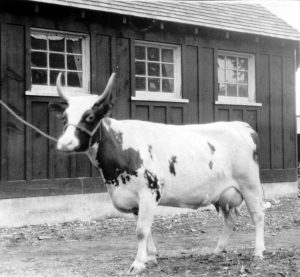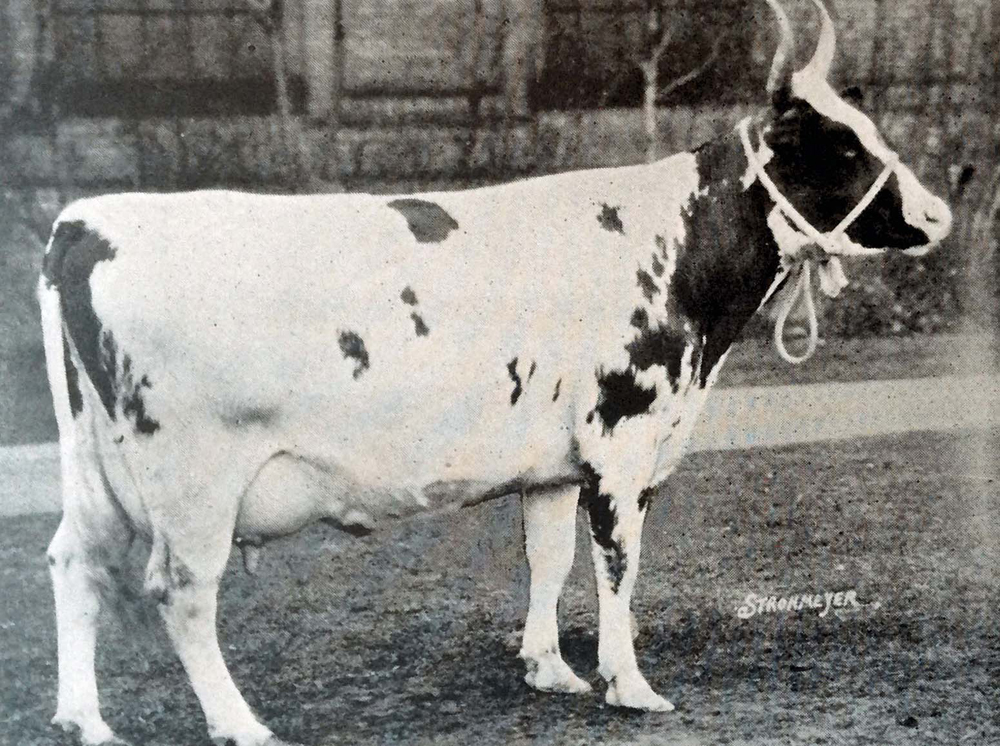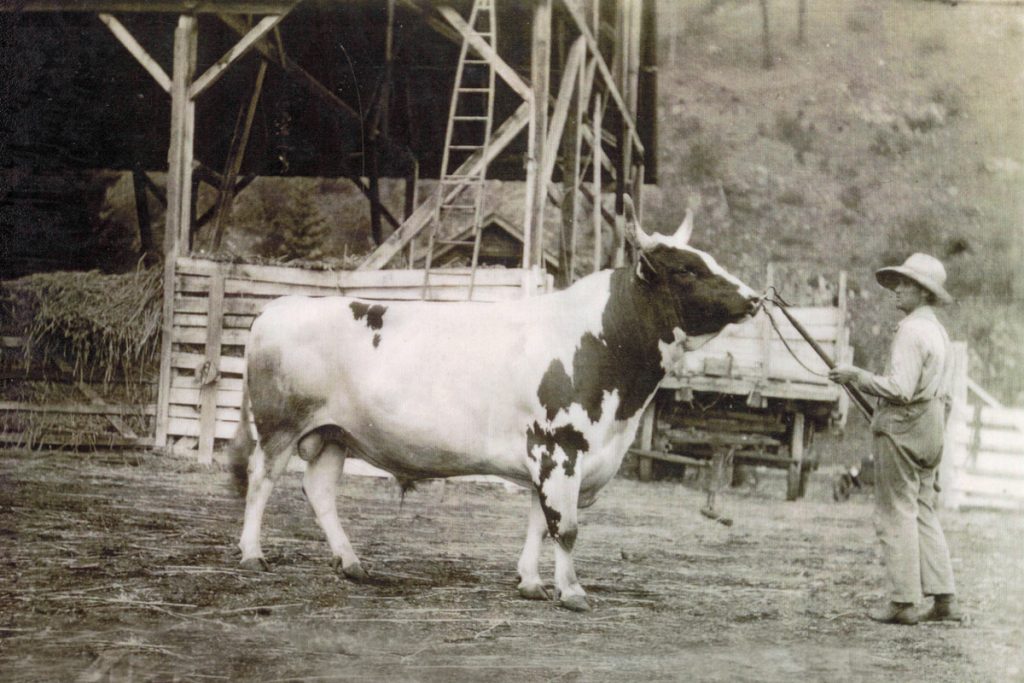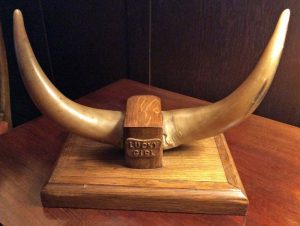Lucky Girl
The morning of September 25th, 1927, Dun‑Water’s cow Glengarry Lucky Girl gave birth to a female calf. She was officially named “Fintry Lucky Girl,” to conform to herd book registration, and was informally called ”Lucky Girl.” She was white and dark reddish-brown, with a white blaze from forehead to nose and a dark chest bib. Her distinctive horns had a lilting backward curl at the tips, a characteristic shared with her mother. This calf generated high hopes for the Fintry Estate. With her background, she was expected to become a top milk producer like her dam.
Lucky Girl’s dam, Glengarry Lucky Girl was one of the first Ayrshire dairy cattle to arrive at Fintry, and a top milker who had won many awards in Ontario and later at Fintry. “Glengarry Girl” came to Fintry in 1924, from the Cumming Bros. Farm at Lancaster, Glengarry County, Ontario. The farm produced fine Ayrshire cattle which improved many herds as well as Fintry’s, and won many national and international awards. Each year, Donald Cumming brought Ayrshires to Toronto’s Royal Winter Fair, to show and also to sell for the right price.
In 1924, Angus Gray had just hired on as Fintry’s Estate Manager. That fall, Gray traveled to Toronto to the Royal Winter Fair seeking Ayrshires to launch the Fintry herd, likely accompanied by Peter Scott. Glengarry Lucky Girl, with a solid record of milk production and numerous awards, caught his eye. She returned with Gray to Fintry. Fintry Lucky Girl was Glengarry Girl’s first calf at Fintry, followed by Fintry Curlew in 1933, Fintry Merry Girl in 1934 and Fintry Lucky Star in 1935. Lucky Girl’s sire was the Fintry bull, MacDonald Competitor, through artificial insemination.
Lucky Girl remained smaller than most Fintry Ayrshires but was a strong milk producer. Although she had one calf, the birth was not recorded, likely due to the calf not surviving.
Lucky Girl became one of Capt. Dun‑Waters’s favourite cows – perhaps he thought of her more as a pet than as a dairy cow. Sadly, Lucky Girl passed away at a young age, she was less than ten years old. Capt. Dun‑Waters preserved her horns and had them mounted as a remembrance of his fine cow.





